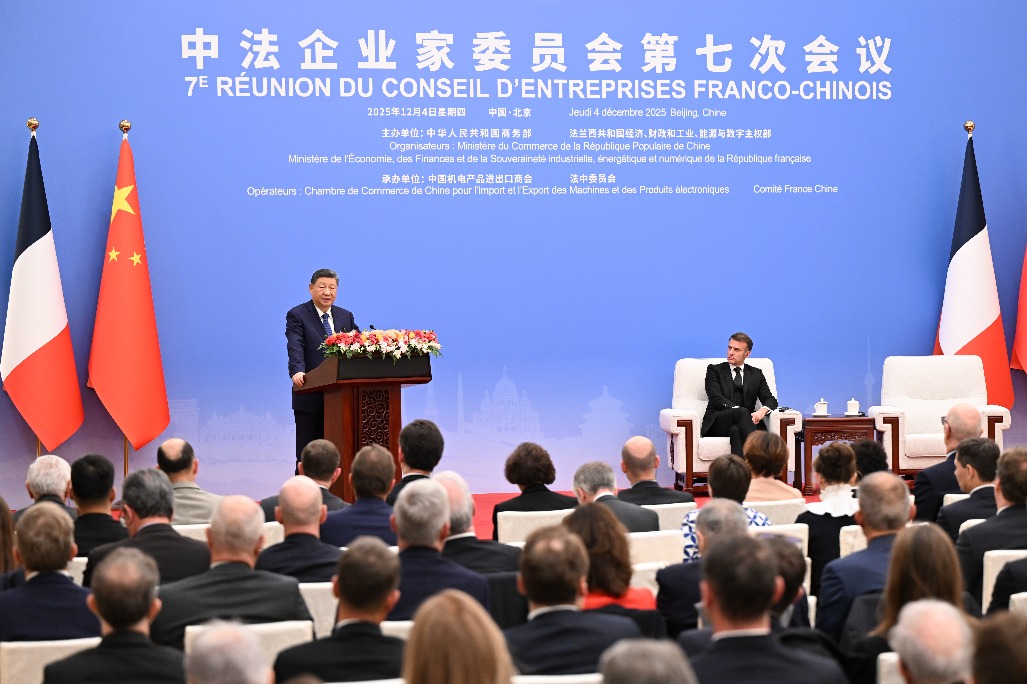Night owls a rising force devouring music, news and white noise

It is 11 pm and Gloria Ye, a 25-year-old office clerk in Beijing, was lying in bed. She reaches out for her phone and opens a mobile audio application.
Every night, she goes to sleep with soothing sounds from her phone. It may be a piece of soft music or simply the sound of rain.
She is used to turning on the radio as it broadcasts something while cooking dinner.
"It's nice to have some sounds, such as audio books which accompany me when I am alone. Since my hands and eyes are engaged in cooking, I would love to have my ears occupied. In addition, I can absorb some useful information, which is very effective," Ye said.
She is among the 200 million night listeners in China who often spend their evenings this way. By doing so, they contribute to the "night listening economy," which refers to the activity involving auditory input between 6 pm and 6 am. That input includes streaming music, audio books, white noise and radio broadcast, among others.
A recent report released by Beijing-based market research consultancy Analysys showed that in 2019, China's night listeners reached a total of 217 million. Their accumulative night listening time surged by 95 percent year-on-year to 10.9 billion hours.
Thanks to internet development and the popularization of intelligent terminals of the internet of things, the country's night listening sector experienced rapid growth in recent years, said Zhu Mingchi, an analyst at Analysys.
"People keep their ears occupied on their way home, before, during and after dinner, and before going to sleep. Night listening scenarios have become more and more diversified," he said.
Zhu believes night listening will penetrate further into every scenario in daily life as intelligent terminals, such as the internet of vehicles and smart speakers, rise in popularity. People listen to the car radio from workplace to home, or turn on some light music on a smart speaker before sleeping. Smartphones are no longer the only choice for night listening.
Data from app tracker Analysys Qianfan showed that those under 40 make up the majority of night listeners.
Specifically, Generation Z, or people born between the mid-1990s and the early 2000s, were the driving force in the market. Those between 31 and 40 accounted for 37.04 percent of the total and have relatively high consumption power.
According to Analysys, the number of China's mobile internet users surpassed 1 billion in 2019. But there were only 217 million night listeners among those users, demonstrating the potential for great growth in the night listening sector.
In addition, the IoT market has been expanding rapidly in recent years. The growth rate in the shipment of smart home equipment in 2020 is estimated to reach 25 percent year-on-year.
Smart home equipment provides a solid hardware foundation for the full-scenario trend of night listening, and the sector is expected to experience tremendous growth in the future, Zhu said.
Recognizing those promising prospects, many smart equipment manufacturers are already taking action.
In September, United States tech heavyweight Apple Inc launched the Apple Watch Series 5. The light portable watch can be connected with earphones via bluetooth.
It has a new feature called noise alert, reminding users to lower the volume when the decibel level rises to the point it may affect the hearing of people. The new feature is especially practical for night listeners, who tend to put on loud energetic music during the night.
On April 23, Chinese telecom giant Huawei launched an artificial intelligent speaker featuring music, audio books, weather forecasts, news and traffic condition suggestions.
"With advanced technology, the evenings for night listeners have become more colorful," Zhu said.
As promising as the future seemingly is, industry experts noted that some bottlenecks for the sector still exist.
For instance, the material for night listening needs to be enriched and refined so consumers are more willing to pay for content. Cash flow is also an important motivation for authors to create high quality content. Enterprises should think of ways to break that dilemma, the experts said.
Today's Top News
- Tokyo urged to specify its past commitments
- Cooperation conducive to steadying progress in China-France partnership: China Daily editorial
- Shenzhou XXI crew set for first extravehicular activities
- Xi, Macron attend China-France Business Council meeting
- China expected to prioritize boosting consumption and domestic demand in 2026, expert says
- Xi, Macron jointly meet press






























